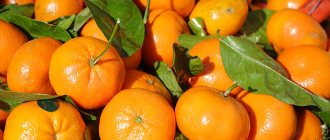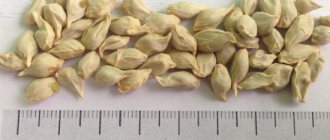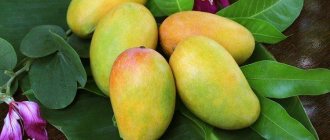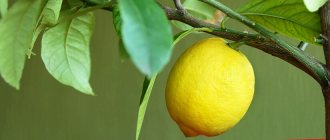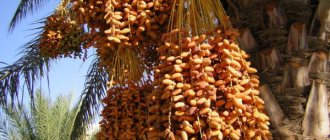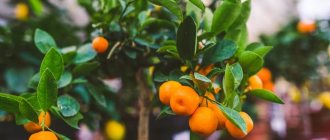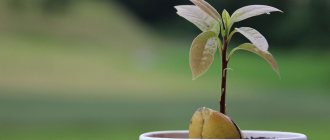Author: Elena N. https://floristics.info/ru/index.php?option=com_contact&view=contact&id=19 Category: Houseplants Published: June 23, 2018Last edits: January 11, 2021
- Watering
- Diseases and their treatment
- Beneficial features
Lychee (lat. Litchi chinensis), or Chinese lychee , is a plant of the Sapindaceae family, which is also called liji, fox, laysi or Chinese plum. There is documentary evidence that this fruit tree was cultivated in China already in the 2nd century BC, and currently it is grown in all countries of Southeast Asia. Juan Gonzalez de Mendoza wrote that the lychee fruit resembles a plum, which does not burden the stomach, and can be eaten in any quantity, which is why he called this crop the Chinese plum. 0Litchi was brought to Europe by the French botanist Pierre Sonner from his trip to Southeast Asia and China. This was in the 18th century. How do they eat lychees? These fruits are good in fresh or canned form; they are used to make ice cream, jelly and other desserts, and also make traditional Chinese wine. We will tell you how you can grow lychee from seed at home, as well as what are the benefits or harms of lychee.
Planting and caring for lychee
- Lighting: Daylight hours are approximately 12 hours. You need bright diffused light from western or eastern window sills.
- Temperature: all year round not lower than 20˚C.
- Watering: regular, moderate, it is best to water through a tray.
- Feeding: from the second year of life - 1-2 times a month with a solution of complex mineral fertilizer in half the dosage or weak solutions of organic fertilizers.
- Pruning: as needed at the beginning of the growing season.
- Reproduction: at home only by seeds (seeds).
- Pests: aphids, spider mites, thrips, whiteflies, scale insects or mealybugs.
- Diseases: root rot.
- Properties: the fruits of the plant are considered medicinal and are widely used in traditional Chinese medicine.
Read more about growing lychee below.
External characteristics of the tree
Under natural conditions, the tree is found in China and Thailand. It grows up to 30 meters in height and bears fruits similar to cherries or small plums. There are other names for the tree, such as:
- "Paradise Grapes"
- "Fruit of Love";
- "Chinese cherry";
- "Liji";
- "Fox";
- "Chinese plum"
The lychee tree belongs to the Sapindaceae family and is perfectly cultivated at home. In an enclosed space, the plant can reach 2.5 meters in height, which is quite acceptable for a houseplant. In Russia, the fruit is also grown in gardens. At the same time, it is carefully protected from frost and dry winds. Such extreme conditions lead to loss of foliage and cracks in the trunk and branches.
Lychee has oblong, fleshy leaves with a slightly shiny character. Color – dark green. The main core runs through the center of the plate, from which there are branches in different directions. This “embossing” is considered the highlight of an overseas guest. The shape of the leaves resembles an elongated ellipse, lowered to the base of the plant.
The ovoid fruits of the lychee tree are small in size, approximately 4 cm in diameter. On the outside they are covered with a pimply skin. The taste is reminiscent of grapes or plums, as indicated by the different names of the tree.
Exotic lychee fruits are widely used to treat various heart diseases, obesity problems and hematopoiesis.
Botanical description
Lychee is an evergreen tree with a spreading crown, in natural conditions reaching a height of 10 to 30 m. Its leaves are complex, pinnate, consisting of 4-8 lanceolate or elongated ovate leaves with a sharp tip. The surface of the leaves is glossy, dark green, and the underside is grayish. The flowers, collected in lush umbrellas up to 70 cm long, have no petals and consist of a greenish or yellowish calyx. Usually, from the numerous flowers of the inflorescence, no more than 15 ovaries develop into fruits, and the rest fall off. Lychee fruits are from 2.5 to 4 cm long and are covered in a red peel covered with numerous sharp tubercles. Inside the fruit there is a light, jelly-like sweet pulp that easily comes away from the peel and has a barely noticeable wine flavor. In the middle of the fruit there is an oval dark brown seed. In the tropics, lychee fruits ripen in May or June.
Growing lychee from seed
Growing conditions
In our latitudes, lychee is a strange plant, so it is difficult to purchase its seedlings in the garden pavilion. But you can try to grow a tree from a seed on your windowsill. To do this, you need to buy ripe (with a strong aroma, red skin and juicy translucent pulp) lychee fruits, separate the pit from the pulp, wrap the seed in a damp cloth or gauze and keep it there for a week, keeping the wrapper moist.
In the photo: Lychee tree branch with berries
The swollen seed is freed from the tissue and planted in a pot with drainage holes, on the bottom of which a layer of expanded clay is first laid, and then flower soil. The seeding depth is 2 cm. Planting several seeds will increase your chances of success. After planting, water the soil in the pot with cool water. The seed is germinated at a temperature of 25-30 ºC, and the soil should be slightly moist all the time. The appearance of sprouts can be expected in 1-4 weeks, but they may appear later.
- How to grow cucumbers on a windowsill - not every variety is suitable, but care is not particularly difficult
Growing exotic pomegranate at home
As soon as the first reddish lychee leaves unfold, the pot is placed on a well-lit windowsill, covering the plant from direct sunlight, and at the stage of development of 4-5 true leaves, the seedlings are transplanted into a large container. Keep in mind that lychee requires twelve hours of daylight for normal development. As for the air temperature in the room, even in winter it should be at least 20 ºC.
What is lychee fruit, what does it look like, where is its homeland: description
The fruit called “lychee” is very unusual and is considered exotic. Some call it a fruit, others say that lychee is a berry. Be that as it may, lychee not only has a pleasant and rich taste, but also great benefits. The benefit of the fruit is that it has a unique biochemical composition - a lot of vitamins and microelements.
It’s worth noting right away that lychee is not a large fruit, its diameter is approximately 3-4 cm . The weight of one berry does not exceed 15-20 grams . The peculiarity of the exotic fruit is its dense and slightly prickly peel, which covers the juicy and jelly-like pulp.
The color of the pulp is milky. Hidden inside the pulp is a large dark brown seed. The taste of lychee is very pleasant. The ripe fruit has a sweet tint with a slight sourness. If you try to find a comparison with other fruits, the taste of the pulp is somewhat reminiscent of cherries and pineapples. The aroma of the pulp is very fresh and sweet.
Lychee is a fruit common in Asia: China, Japan, India, Thailand . In these countries, lychee is often called the “eye of the dragon” for its visual similarity to an eye: a white apple and a black apple. For its beneficial and nutritional qualities, lychee has gained popularity in folk medicine. Many even consider it an aphrodisiac due to its rich zinc content, and therefore lychee is a mandatory treat on the tables of newlyweds.
Frequent consumption of lychee can have a beneficial effect on all body systems, increasing body tone, improving vascular function, “killing” cholesterol and lowering sugar. The great merit of lychee is its ability to regulate the water-salt balance in the body, relieve swelling and promote weight loss.
IMPORTANT: Not only the pulp of the fruit is eaten. Healing decoctions are prepared from lychee peel. The seed, for example, in Vietnam and China is fried with spices in oil; raw lychee seed is considered poisonous.
Lychee: whole fruit, pulp and seed
Lychee: cross-section of the fruit
Lychee pulp without peel. It is best to peel lychees with a sharp and thin knife.
Lychee fruits on a tree, branches
Tree with ripe lychee fruits
Lychee care at home
Watering
Lychee is a moisture-loving tropical plant, so the seedlings are sprayed with boiled or filtered water from a spray bottle twice a day. Watering the substrate should be regular but moderate. To moisten the substrate, water at room temperature that has been passed through a filter or left to stand for two days is also used. The most convenient way to moisten the soil in a pot is to add water to the pan. Develop a watering regime so that the plant does not suffer from either a lack or excess of moisture in the roots, and maintain high air humidity in the room all the time.
Top dressing
The first time the substrate in a pot with lychee is fertilized three months after germination, and then fertilizing is not applied until the plant is at least a year old. From the second year of life, lychees are fed 1-2 times a month with a solution of complex mineral fertilizers in moderate concentration. The plant also responds well to organic fertilizing in the form of mullein solution (1:15). Fertilizers added to the substrate promote the formation of buds and stimulate the plant to bear fruit.
How to grow edible tangerine at home
Trimming
Lychee grows slowly, so it does not need frequent pruning. You will only need to form the crown of the tree in the first two years of its life, and after that maintain its shape by shortening too long shoots. Even if the tree does not bear fruit, do not be upset: after all, not every amateur gardener has such an attractive exotic plant in his home.
Landing rules
Since lychee fruit is readily available at the supermarket, you can try growing a tree directly from the seed.
For this you will need fresh fruits. Prepare in advance the containers in which you will plant the seeds (regular plastic cups or any other small container will do) and fill them with soil mixture. Now let's move on to preparing the seeds. Peel the fruits and remove the seeds (you can eat the pulp, it is very tasty and healthy). Next, rinse your seeds with lukewarm, settled water (cold running water is absolutely not suitable). After this, you can plant the seeds in cups - one in each container.
After planting, cover them with a plastic bag, creating a kind of greenhouse. Don't forget to ventilate the sprouts from time to time. The temperature “under the hood” should be about +35 °C - in such conditions you will get the result as quickly as possible. When shoots appear, the temperature can be reduced to +25 °C. As a rule, seedlings grow up to 20 cm, and after that the plant goes into a dormant state, which lasts from a year to two.
All this time it is growing the root system. In order for the roots to develop fully, transplant the future tree into a small pot. Of course, growing lychees from seeds will take quite a long time, but after a few years the plant will begin to bear fruit, and you will be able to enjoy exotic fruits directly from your windowsill.
Pests and diseases
Diseases and their treatment
Lychee at home is rarely affected by disease. Troubles with the plant can arise as a result of insufficient or improper care. For example, due to excessive watering, the roots of the plant can rot, and if there is insufficient moisture, the lychee will begin to wither and wither. Follow our recommendations, and your tree will never get sick.
In the photo: Lychee branch with berries
Pests and their control
Lychee is also resistant to pests, but if aphids, spider mites, thrips, whiteflies, scale insects or mealybugs appear on some indoor plants, they can move onto lychees. Therefore, regularly inspect your plant collection and at the first symptoms of infection by a particular pest, take action immediately: treat the occupied plant with a solution of an insecticidal or acaricidal preparation prepared in accordance with the instructions.
- Planting lilies
Types and varieties
Breeders have developed many varieties and hybrids of lychee, but this crop is widely grown only in Asia. The most famous cultivars of the plant are:
- Green drooping is a tree with light green leaves, the fruit of which has a barely noticeable green stripe. The fruits do not lose their freshness and taste even three days after peeling them;
- Glutinous rice balls - the fruits of this variety have dense and sweet pulp with a taste of honey, they have a red skin without tubercles, and the seed is much smaller than that of fruits of other varieties, or there is none at all;
- Sweet osmanthus is a variety with sweet fruits that have the smell of osmanthus, in a bright red and very bumpy skin;
- Green Yatu - this variety has a fruit skin covered with dark green specks;
- Blackleaf is an early-ripening variety with fleshy fruits, the peel of which secretes a juice similar to red ink;
- May red is the earliest variety, the fruits of which are harvested in May;
- Concubine's Smile is the oldest early ripening variety. The fruits and peel of the plant secrete red juice.
In the photo: Lychee berries are a healthy fruit
How to choose lychees to buy
To grow an exotic fruit, you need to get its seeds. But you need to do this for your own benefit. Lychee seeds are not sold in seed departments, but the fruit germinates from seeds taken from fruits purchased in a regular supermarket. When choosing lychees, you should pay attention to the color of the fruit, which should be pink. If it is brown or yellow, the fruit will be overripe or underripe.
Lychees are inspected for stains, cracks and mold. The ripe fruit has elasticity. The smell is fresh and pleasant. Fruits that have been left in the store smell of a sweet aroma.
Properties of lychee - harm and benefit
Beneficial features
Lychee fruits contain substances beneficial to the human body: vitamins E, K, C, H, PP and group B (B1, B3, B6), magnesium, sodium, phosphorus, iodine, manganese, zinc, selenium, iron, calcium, potassium, pectins and organic acids.
Eastern medicine uses lychee fruits to normalize sugar levels in diabetes, treat and prevent atherosclerosis, improve kidney, liver and lung function. People with cardiovascular diseases are advised to consume lychee fruits because they contain potassium in their pulp. Lychee has also been proven to be beneficial for anemia, high blood cholesterol, pancreatic diseases and intestinal disorders. In Hindu medicine, lychee fruits are considered an aphrodisiac that increases sexual desire and male power.
Contraindications
Lychee fruits are contraindicated only for those who have an individual intolerance to them. They bring only benefits to everyone else, but stale fruits with dark skin can cause intestinal upset.

